Phase 2: Big Questions (May – December 2016)
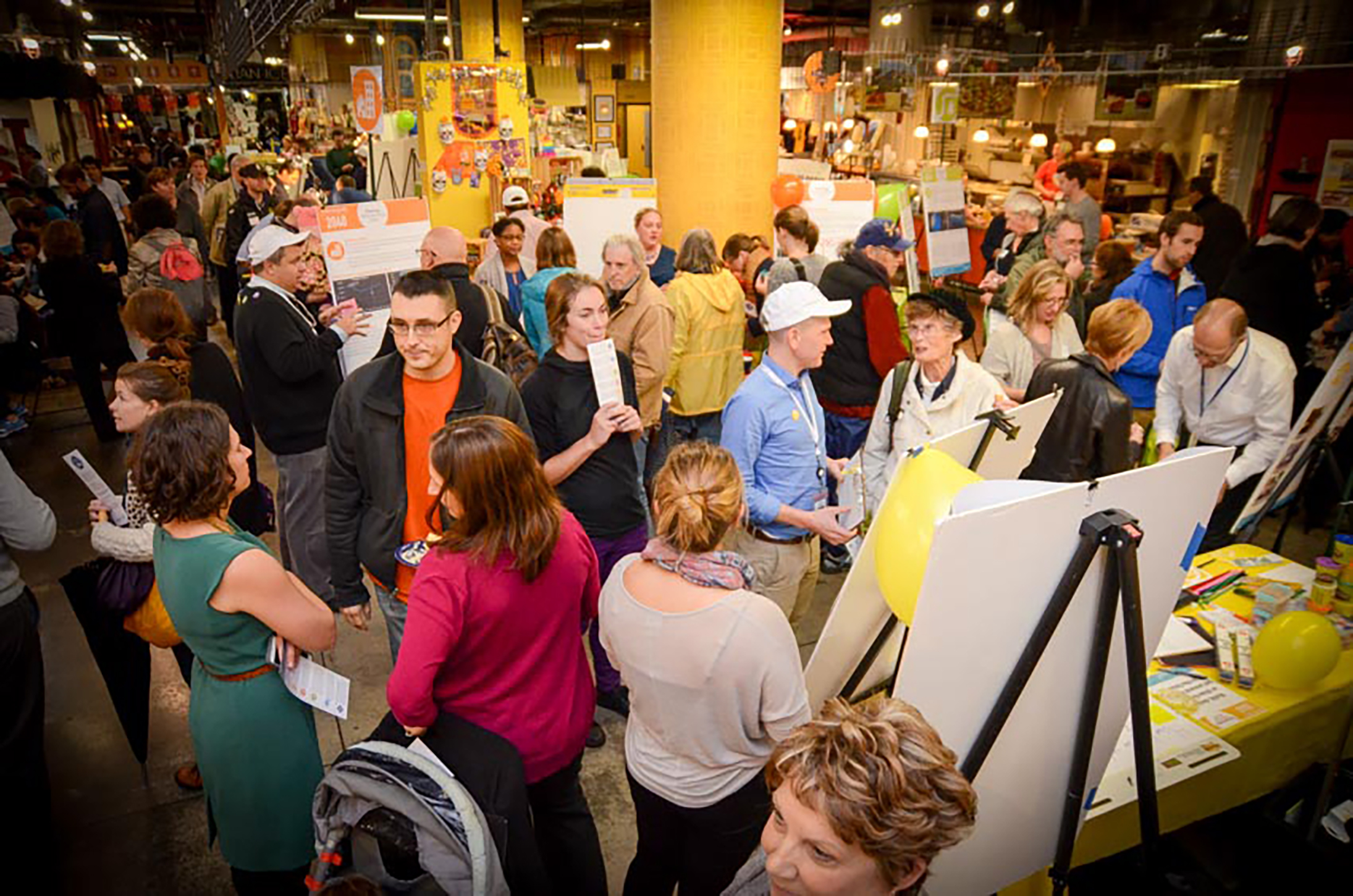
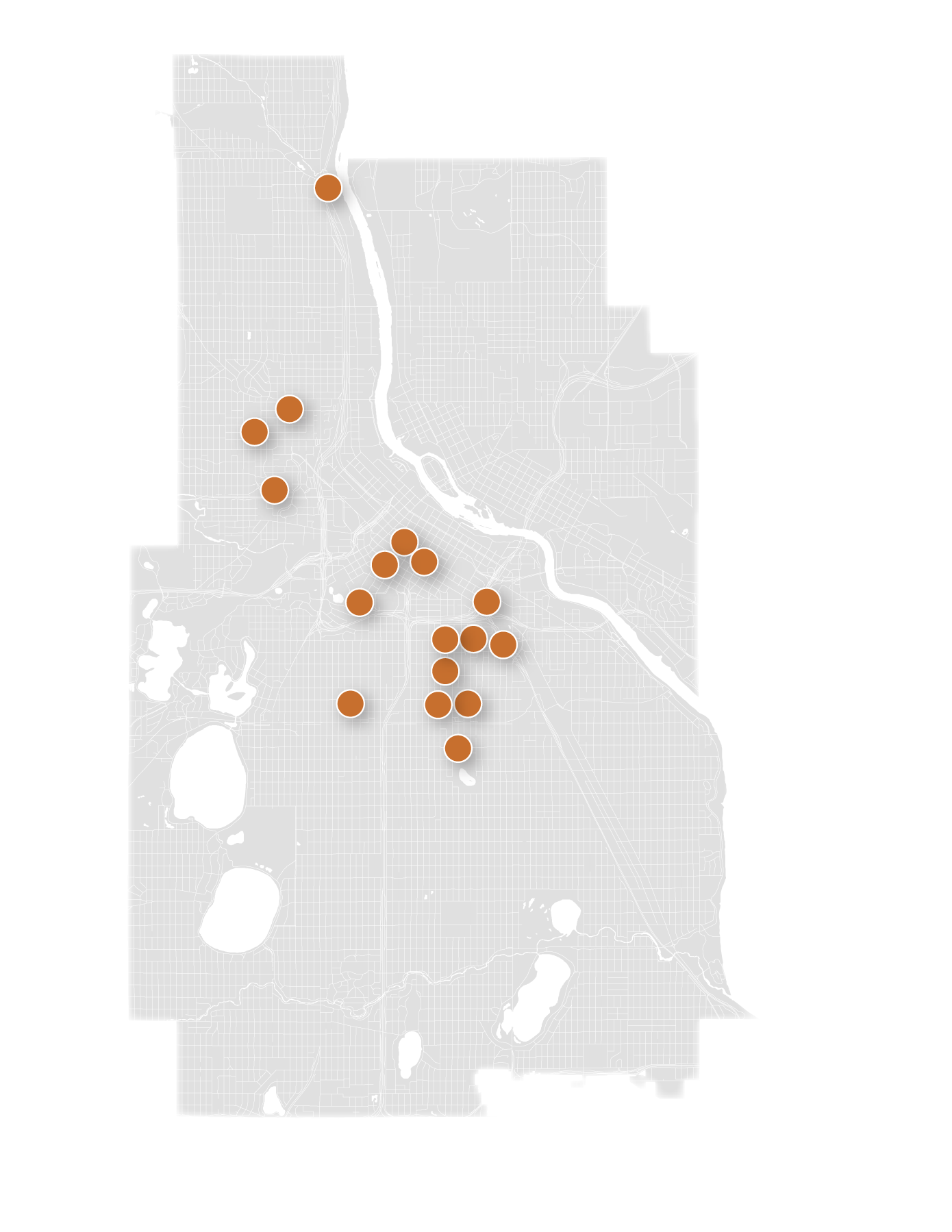
In the Phase 2: Big Questions, Topical Research Teams began the work of analyzing existing policy – assessing trends, backgrounds, and priority issues related to their topic. Additionally, the teams had the benefit of public input on “big ideas” gathered from the Launch. To set the stage for this phase, the Topical Research Teams identified topics for the community to address in preparation for crafting their topical priorities. City staff did not conduct in-person engagement on every topic, but instead focused on some of the core elements of the plan – transportation, jobs, housing, and the environment – and visions for tying all the pieces together. The engagement questions were designed to engage with the public on their perceptions, values, aspirations, and experiences in their daily lives.
Throughout the summer, City staff continued to raise awareness about Minneapolis by reaching out to key audiences at street and cultural festivals. Staff tabled at various events throughout the City and encouraged the community to share their vision of the future of Minneapolis through Ernest Hemingway’s Six Word Story. Stories were recorded on cards, and shared with participants throughout each event.
In order to help achieve the engagement goals and objectives of integrating artistic strategies into the engagement process, the City issued a Call for Artists to help design and engage traditionally underrepresented communities in civic processes. Artists responded to the call for three different projects:
- Social Practice Artist – The purpose of this project was to hire an artist or artist team to assist in engaging public meeting attendees during a set of open houses. The social practice artist is responsible for designing meetings that are fun, thought-provoking, interactive, and family friendly.

- Happenings Project – The purpose of this project was to hire an artist or artist team to assist in engaging the community during a set of open houses. This project resulted in an artist-designed performance during the meetings that raises awareness of comprehensive plan issues and offer thought-provoking questions for the audience to consider rated to the plan.
- Mobile Engagement Tool – The purpose of this project was to hire an artist or artist team to design and fabricate a highly portable and durable engagement tool that can be used for indoor and outdoor engagement activities such as street and cultural festivals and large events.
Artist Monica Sheets was selected as the social practice artist to help design engagement activities, and worked alongside consultant Community Design Group (CDG), to implement and design two open houses that took place in Phase 2: Big Questions. Artist Eric F. Avery was brought on board for the Happenings Project, and the artist team of Mike Hoyt and Molly Van Avery was selected to commission the mobile engagement tool and carry out engagement in subsequent phases.
Phase 2 culminated in an engagement push in October and November that included online engagement materials and questions, Tweet with a Planner, an updated Meeting-in-a-Box, eight Community Dialogue listening sessions with key audiences, and two identical open houses on the north and south sides of the city.
Engagement Activities
|
Big Questions Open House - MGM Big Questions Open House - NC Juneteenth Somali Independence Day Open Streets - Lake Street Cedar Riverside Health Fair Open Streets - West Broadway |
PARTNERS with Youth Conference Metropolitan Urban Indian Directors (MUID) African American Leadership Forum (AALF) Senior Center Community Dialogue Latino Community Dialogue |
Minneapolis Youth Congress Metropolitan Urban Indian Directors Southeast Asian Community Dialogue Tweet with a Planner Digital Workshop Phase 2 Meeting-in-a-Box (Packet) |
Engagement Questions
For the earlier part of the phase, the public engaged on the question of their vision for Minneapolis by asking their “Big Ideas”. Community members were engaged at street and cultural festivals through the summer and asked to share their vision. Later in the fall, City staff engaged on the public’s experiences on topical elements around housing, jobs, transportation, the environment and the vision for tying it all together. These engagement questions included:
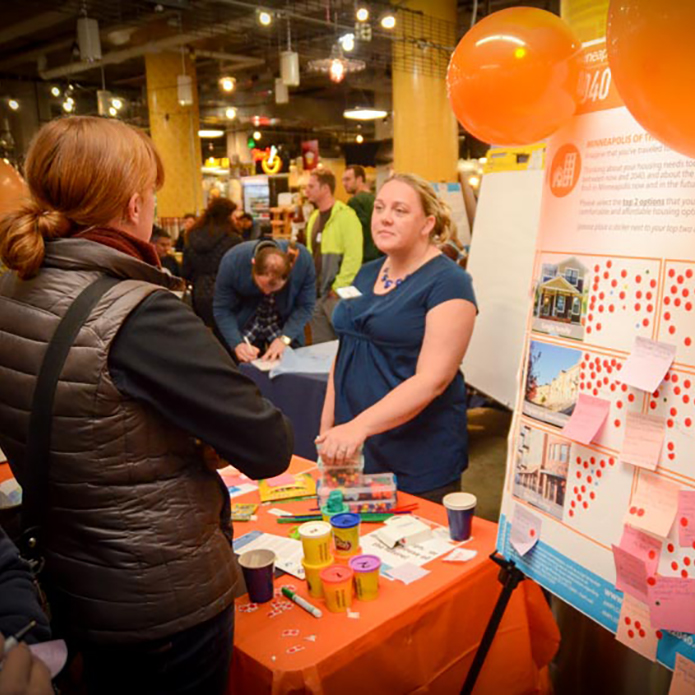
- Share your six-word story for the future of Minneapolis!
- Transportation: How do you get around the city today? How do you think your transportation needs will change by 2040?
- Jobs: What opportunities do you need to help you feel financially stable and secure? How will your employment needs change between now and 2040?
- Housing: Are you satisfied with the housing options available to you right now? If not, what’s missing? How will your housing needs change between now and 2040?
- Environment: Are we, the people of Minneapolis, doing enough to improve the environment? If not, what’s missing? How do you think your life will be different in 2040 as a result of climate change?
- Vision/Tying it Together: What does your ideal Minneapolis look like in 2040? What makes you feel connected to your neighborhood?
Methods
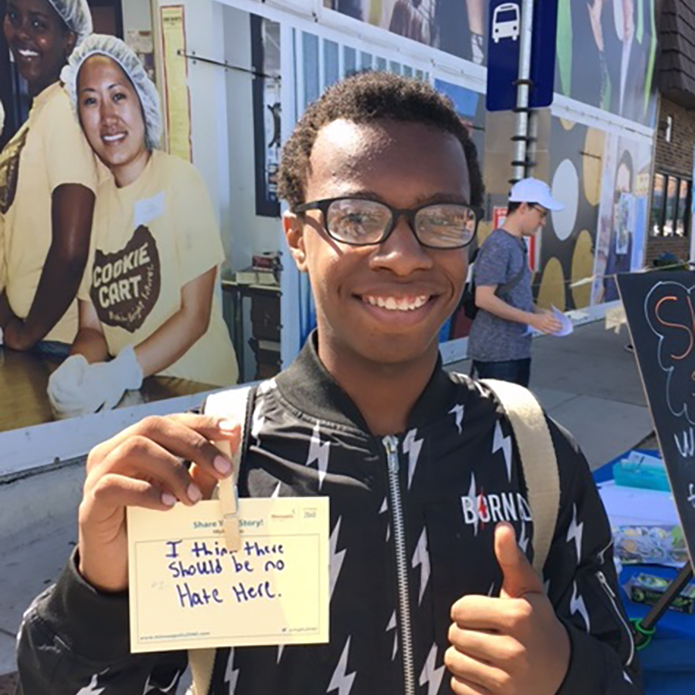
Staff attended street and cultural festivals to raise awareness of Minneapolis 2040 and seek “Big Ideas” for the future of Minneapolis. At each of these events staff used coloring activities to draw youth and kids in to have a discussion about the future of the city, and to envision their community when they have aged 20 years. Participants were given an overview of the comprehensive plan, and Minneapolis 2040 project information on post cards. Participants were asked to share their ideas with a Six Word Story. Stories were recorded on cards, and shared with participants throughout each event that were hung on clothes lines.
A second round of Community Dialogues were hosted in the community. In earlier discussions, communities identified the need to focus the conversation around two or three topic areas, so staff returned with key discussion questions around transportation, jobs, housing, and the environment. City staff also returned with Department Leaders to engage and listen to participants. Participants were asked to share their experiences around those topics today, and how those needs may change in the future.
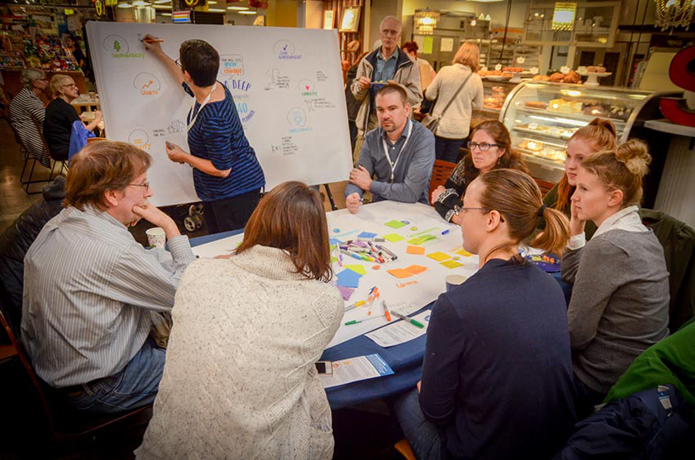
Two community meetings were held at the end of October, one at the Midtown Global Market and the other at North Commons Park. Community members interacted with staff at topical stations on housing, jobs, transportation, and the environment. Monica Sheets, a social practice artist, was a major contributor in designing meetings that were fun, thought-provoking, interactive and family friendly. This included writing the engagement questions, subcontracting artists, and soliciting feedback on the engagement process.
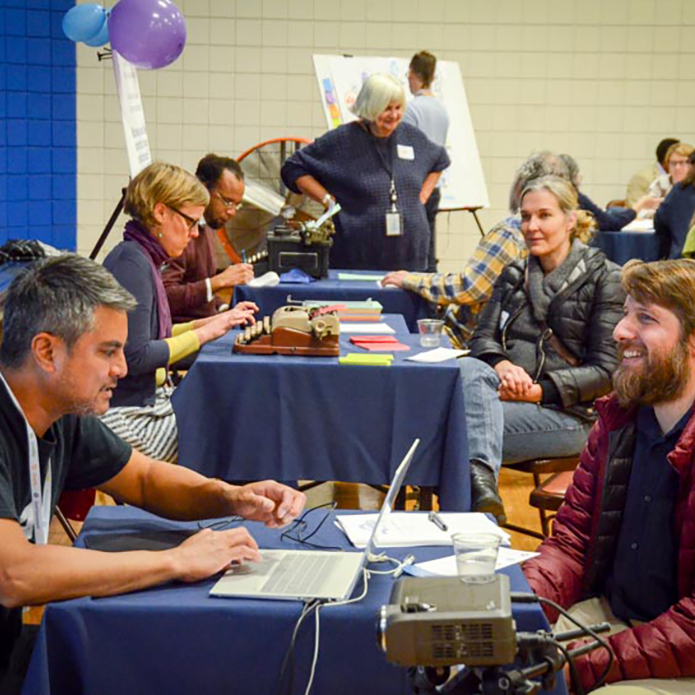
On more visionary questions, poets and graphic artists listened to participants share their perspectives and aspirations and represented their responses through poetry or visual art. Participants also had the opportunity to take part of a mini focus group called “Dig Deep with a Planner” which was staff led discussions about the participants’ choice of topics.
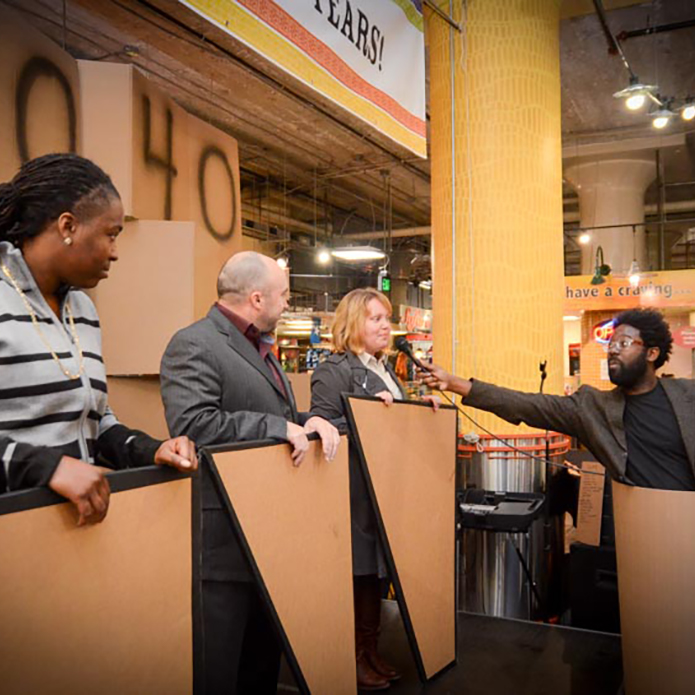
Eric F. Avery, a performance artist, interactively engaged participants in a performance called TV2040, a fake television program being recorded live in 2040, which included a game show and 1 on 1 interviews with participation from the public.
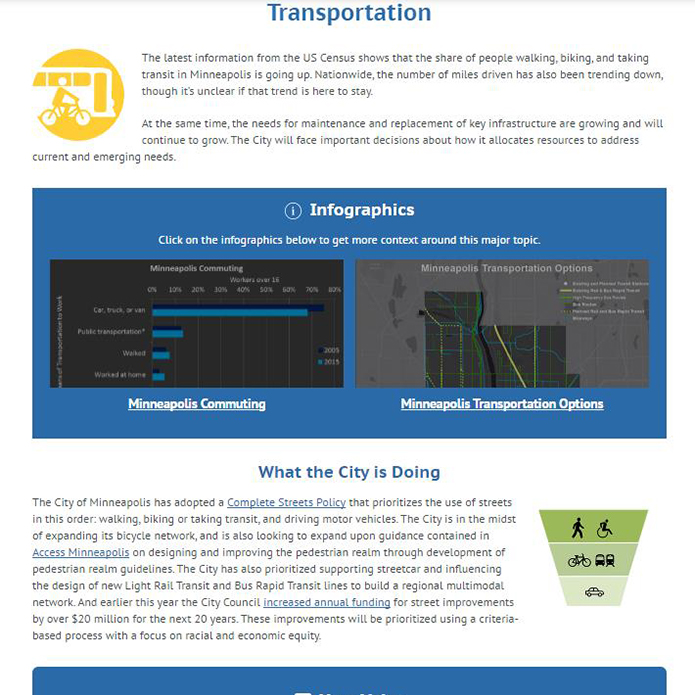
Community members unable to attend the public meetings had access to the same content, questions, and feedback opportunities via the project website through interactive graphics and comment boxes. Another online method used was Tweet with a Planner. Over the lunch hour City staff posed questions based on the six Comprehensive Plan Values for community members to engage on.
What did we hear?
Engagement feedback collected throughout Phase 2 were transcribed and organized under themes that were representative of all the comments. The themes produced were an attempt to show the range of comments that were received. It shows the depth of comments that did not necessarily fall into the predefined topics of the comprehensive plan, but shows the concerns and ideas shared by participants. These themes include:
|
|
|
Themes that informed engagement in future phases are highlighted below, which includes collected comments and summaries.
|
|
|
|
All the raw data collected from Phase 2: Big Questions, and a summary handout of engagement activities, can be found here.
Next Steps/How was the feedback used?
A common theme that was heard throughout Phase 2 engagement was the topic of racial equity on topics such as housing, jobs, transportation, the environment, and health. Community members acknowledged that disparities between people of color and indigenous communities compared to white people continues to persist, and that there is a lack of opportunities for economic mobility and access to healthy and safe homes that meets their needs.
The engagement feedback influenced City staff to formulate overarching goals for the comprehensive plan. The purpose of the goals is to state the plan’s intent as clearly as possible, and to provide guidance for staff in developing the draft comprehensive plan.
The history of systematic racism and its influence on today’s conditions became a focal point of discussion among many community members. This influenced City staff’s direction in the design of engagement around content in order to raise the narrative of racial inequities and the history of it in Minneapolis for Phase 3: Policy Framework.

